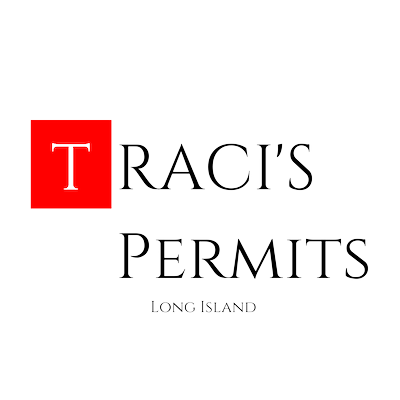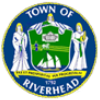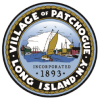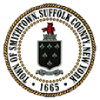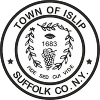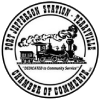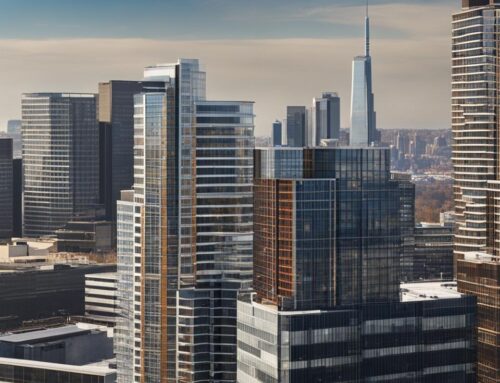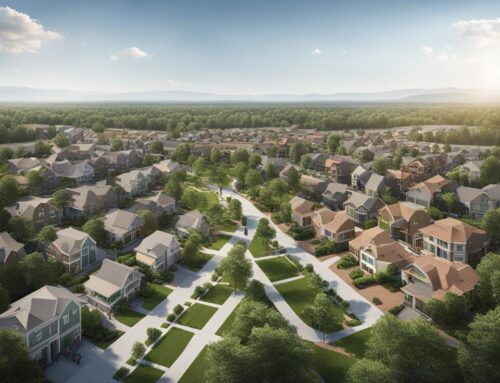Welcome to TracisPermits.com, your go-to resource for expert guidance and seamless applications for zoning variances in Suffolk County, Nassau County, and throughout Long Island. In this article, we will explore the vital role that public opinion plays in zoning variances and its impact on community development and land use planning.
Key Takeaways:
- Public opinion shapes zoning variances and influences community development.
- It ensures community engagement and provides valuable feedback in the zoning process.
- Local authorities consider the opinions and concerns of residents, businesses, and community organizations when making zoning decisions.
- Zoning variances allow property owners to deviate from zoning restrictions when necessary.
- Public opinion promotes equitable development and maintains the overall well-being of the area.
At TracisPermits.com, we understand the significance of public opinion in zoning variances. Our experienced team is dedicated to assisting you in navigating the complexities of the zoning process, ensuring that your application meets local regulations and aligns with the needs and desires of the community. Contact us today at 631-492-0927 to explore how we can help you with your zoning variance needs.
Understanding Zoning Variances
Zoning variances play a crucial role in land use planning and development. They allow property owners to deviate from the strict requirements of a zoning code or regulation, providing relief from zoning restrictions that may limit the reasonable use of a property. But what exactly are zoning variances, and how does the process of obtaining a variance work?
What Are Zoning Variances?
Zoning variances are exceptions granted to property owners that allow them to bypass certain zoning regulations. These variances are granted when strict compliance with the zoning code would cause unnecessary hardship or prevent the reasonable use of the property. They provide flexibility and adaptability to the ever-changing needs of a community.
The Purpose of Zoning Variances
The purpose of zoning variances is twofold. First, they aim to ensure fair and equitable treatment of property owners by allowing reasonable adjustments to zoning requirements. Second, they facilitate the development and expansion of properties in a way that aligns with the long-term vision and goals of the community.
The Process of Obtaining a Zoning Variance
The process of obtaining a zoning variance typically involves several steps. It begins with submitting an application to the local zoning board, which reviews and evaluates the request. The applicant must provide evidence of the need for the variance and demonstrate that it will not negatively impact the surrounding neighborhood.
The local zoning board evaluates the application based on the specific requirements outlined in the zoning codes and regulations of the jurisdiction. The board considers factors such as the unique circumstances of the property, the potential impact on neighboring properties, and the overall benefit to the community.
Requirements for a Zoning Variance
The requirements for obtaining a zoning variance vary depending on the specific zoning codes and regulations in place. Generally, applicants must demonstrate that strict adherence to the zoning regulations would cause undue hardship or prevent the reasonable use of the property.
Proof of hardship may include physical limitations of the property, unique topography, or other exceptional circumstances that make strict compliance impractical.
Local Zoning Boards
Local zoning boards play a crucial role in the zoning variance process. These boards, composed of appointed or elected individuals, review and decide on variance applications. Their decisions are based on the specific guidelines set forth in the zoning codes and regulations.
The members of the zoning board carefully evaluate the merits of each variance request, considering the impact on the community, the balance of competing interests, and the overall goals of the zoning regulations.
Zoning Codes and Regulations
Zoning codes and regulations are the legal frameworks that outline how land can be used and developed in a specific jurisdiction. These codes and regulations aim to balance the interests of property owners, residents, businesses, and the community as a whole.
These laws typically classify different areas into specific zoning districts, each with its own set of permitted uses, building specifications, and developmental requirements. Zoning codes and regulations are regularly updated and amended to ensure they remain aligned with the changing needs and values of the community.
The Influence of Public Opinion on Zoning Variances
Public opinion holds significant sway in the decision-making process for zoning variances. When it comes to proposed zoning changes, local authorities understand the importance of community feedback and engagement. This is why they often host public hearings and provide designated comment periods where residents, businesses, and community organizations can express their opinions, concerns, and feedback regarding proposed zoning variances.
These public engagement opportunities play a crucial role in shaping zoning decisions. They provide decision-makers with valuable insights into the needs and desires of the community. By considering the collective voice of the public, authorities can evaluate the merits of a zoning variance application and make informed decisions that align with the best interests of the community.
This transparent and accountable approach to zoning variances ensures that the final decisions reflect the values and aspirations of the people they serve. It also fosters a sense of community ownership and promotes trust in local governance.
“Public opinion is the lifeblood of community decision-making. It helps guide us towards equitable and sustainable development that benefits everyone.”
In order to promote transparency and accountability, it’s essential for a zoning process to allow public engagement. This creates an inclusive decision-making process that actively involves community members. By opening up opportunities for public hearings and comment periods, local authorities demonstrate their commitment to actively listening and responding to the concerns and desires of the community.
Public Engagement in Zoning Decisions
Public engagement in zoning decisions is a key component of the democratic process. It empowers community members to have a say in shaping their neighborhoods and ensures that the decisions made reflect the values and interests of the people who call the area home.
When residents are given the opportunity to weigh in on zoning variances, it encourages a more comprehensive understanding of the potential impacts on the community. By actively engaging in the zoning process, community members can contribute their unique perspectives, experiences, and knowledge to help shape the outcome.
Furthermore, public engagement fosters a sense of shared responsibility and ownership in the development of the community. When individuals feel included in the decision-making process, they are more likely to support and contribute positively to the implementation of zoning variances.
Enhancing Transparency and Accountability
Transparency and accountability are essential in any democratic society. In the context of zoning variances, public opinion serves as a check and balance system, ensuring that decisions are made in the best interest of the community at large.
By allowing public comment periods and hosting public hearings, local authorities create opportunities for community members to voice their concerns, ask questions, and offer suggestions. This open and transparent approach helps build trust between the community and decision-makers, fostering a collaborative environment where constructive dialogue can take place.
When decisions are made based on public opinion, it enhances accountability by ensuring that the considerations of the community are taken into account. This creates a system where decision-makers are directly responsible to the people they serve, strengthening the overall integrity and fairness of the zoning process.
To summarize, the influence of public opinion on zoning variances cannot be overlooked. Public engagement provides decision-makers with valuable insights, promotes transparency and accountability, and empowers the community to actively shape their neighborhoods. By considering the collective voice of the public, authorities can make zoning decisions that reflect the needs and desires of the community, paving the way for equitable and sustainable development.
Case Studies: Public Opinion Impact on Zoning Variances
Several real-world case studies demonstrate the significant influence that public opinion can have on zoning variances. These examples showcase how community-led efforts and public engagement can shape zoning decisions and ensure that they align with the interests and values of local residents.
Successful Public Opinion Influence
In one case study, residents of Smithville organized community meetings, circulated petitions, and voiced their concerns regarding a proposed zoning variance that would have allowed a large commercial development in their residential neighborhood. Due to the overwhelming public opposition, the zoning board denied the variance application, preserving the character and quality of life in Smithville.
“The community’s united front and dedication to preserving our neighborhood made a significant impact. The zoning board recognized our concerns and made the right decision by denying the zoning variance.”
– Jane Adams, Smithville Resident
Another case study involves the town of Elmwood, where public support for a zoning variance played a crucial role in the approval of a new community center. Residents expressed their desire for increased recreational facilities and presented a comprehensive plan that highlighted the potential benefits. The zoning board acknowledged the positive impact on the community and granted the variance, resulting in the successful establishment of the community center.
Community-Led Zoning Decisions
The town of Oakwood provides an example of a community-led zoning decision that took into account public opinion. Recognizing the need for affordable housing, residents actively participated in public hearings and engaged in constructive discussions with local authorities. As a result, the zoning board revised the existing regulations to allow for increased density in specified areas, facilitating the development of affordable housing options.
Public Opposition and Support
A case study from Lakeview demonstrates the impact of public opposition and support on zoning variances. In response to a proposed variance that would have allowed the construction of a large-scale retail store, residents expressed concerns about increased traffic, noise pollution, and the potential impact on local businesses. The zoning board ultimately denied the variance due to public opposition and the lack of community support.
Conversely, in the town of Riverside, public support for a zoning variance proved instrumental in the successful development of a renewable energy project. Residents recognized the environmental benefits and economic opportunities associated with the project and provided overwhelming support during public hearings. The zoning board approved the variance, allowing the development to proceed.
| Case Study | Outcome |
|---|---|
| Smithville | Zoning variance denied due to public opposition |
| Elmwood | Zoning variance approved based on public support |
| Oakwood | Zoning regulations revised to allow for affordable housing |
| Lakeview | Zoning variance denied due to public opposition |
| Riverside | Zoning variance approved based on public support |
The case studies above illustrate the significant impact that public opinion can have on zoning variances. They highlight the importance of community engagement, constructive dialogue, and informed decision-making processes in ensuring that zoning decisions reflect the needs and desires of local residents.
The Benefits of Public Opinion in Zoning Variances
Including public opinion in zoning variances offers several benefits. It fosters an inclusive decision-making process where the voices of all community members are heard and considered. This promotes transparency and accountability in zoning decisions, making sure they align with the needs and desires of the community. Public opinion also strengthens community relationships by providing opportunities for dialogue and collaboration. Furthermore, it promotes equitable development by addressing community concerns and ensuring that zoning decisions do not disproportionately favor certain groups or interests.
By incorporating public opinion, zoning boards can:
- Promote an inclusive decision-making process that incorporates diverse perspectives.
- Build trust and accountability by valuing community input in zoning decisions.
- Improve community relationships by creating opportunities for dialogue and collaboration.
- Ensure zoning decisions address community concerns and prioritize equitable development.
Engaging the public in zoning variances brings valuable insights and perspectives to the table. It allows the community to have a say in shaping their neighborhood and ensures that zoning decisions align with their needs and aspirations. This collaborative approach helps build stronger and more resilient communities.
Challenges in Incorporating Public Opinion in Zoning Variances
Incorporating public opinion in zoning variances presents several challenges that must be navigated carefully. The opinions within the community can often be conflicting, making it difficult to find common ground and reach a consensus. Balancing the diverse needs and interests of residents, businesses, and other stakeholders is also a complex task.
One of the main challenges is navigating the diverse perspectives within the community. Each individual or group may have distinct priorities and concerns, making it challenging to address everyone’s needs effectively.
“Finding common ground amidst diverse perspectives is crucial for inclusive zoning decisions.”
Another challenge is the presence of information gaps. Limited access to relevant information about zoning variances can hinder individuals or groups from fully understanding the proposed changes and formulating informed opinions.
Limited participation is yet another challenge. Certain groups, such as marginalized communities or individuals with limited resources, may face barriers to effectively voicing their opinions and participating in the zoning process.
The influence of special interests can also complicate the decision-making process. When powerful stakeholders or organizations exert undue influence, the broader community’s perspectives may be overshadowed, resulting in zoning decisions that do not fully reflect the community’s interests.
To summarize:
| Challenges in Incorporating Public Opinion in Zoning Variances |
|---|
| Conflicting opinions within the community |
| Balancing diverse needs and interests |
| Navigating diverse perspectives |
| Information gaps and limited access to information |
| Limited participation |
| Influence of special interests |
The challenges in incorporating public opinion in zoning variances require careful consideration and effort to ensure fair, transparent, and inclusive decision-making processes that prioritize the collective well-being of the community.
Strategies for Effective Public Engagement in Zoning Variances
Enhancing public engagement in zoning variances requires the implementation of effective strategies. By developing community outreach programs, local authorities can inform and educate the public about proposed zoning changes. Clear and accessible information should be provided through various communication channels, ensuring that all community members have the opportunity to understand and engage with the process.
Collaboration with stakeholders, such as neighborhood associations and community organizations, is crucial in ensuring that diverse perspectives are considered. By actively involving these groups, decision-makers can gain valuable insights and feedback from those directly affected by zoning variances.
Inclusive decision-making processes play a key role in fostering meaningful engagement from the community. By holding public hearings and providing the opportunity for public comment, local authorities can ensure that the voices of community members are heard and taken into consideration. This transparent and inclusive approach promotes accountability and strengthens the overall decision-making process.
By implementing these strategies for public engagement, zoning variances can be better informed by community input, resulting in decisions that align with the needs, values, and desires of the local residents.
Community Outreach Programs
Community outreach programs are an essential component of effective public engagement in zoning variances. These programs aim to inform and educate the public about proposed zoning changes and their potential impacts on the community. By organizing workshops, town hall meetings, or informational sessions, local authorities can provide the necessary information and address any concerns or questions raised by community members.
Accessible Communication Channels
It is crucial to ensure that communication channels are accessible and inclusive to foster public engagement in zoning variances. This can include using multiple mediums such as websites, social media platforms, email newsletters, and physical mailings to reach a wide range of community members. By providing clear and easily understandable information, local authorities can encourage more meaningful participation from diverse segments of the population.
Collaboration with Stakeholders
Collaborating with stakeholders, including neighborhood associations, community organizations, and business groups, is essential to gain a comprehensive understanding of the community’s perspectives and concerns. By actively involving these stakeholders in the decision-making process, local authorities can ensure that zoning variances are in line with the goals and aspirations of the community.
Inclusive Decision-Making Processes
Inclusive decision-making processes, such as public hearings and comment periods, provide an opportunity for community members to express their opinions, concerns, and ideas regarding zoning variances. This inclusive approach allows decision-makers to consider different viewpoints and ensures that the final decision reflects the collective voice of the community.
Effective public engagement strategies in zoning variances lead to more informed decisions that consider the diverse needs and preferences of the community. By fostering open dialogue, collaboration, and transparency, local authorities can create zoning regulations that promote sustainable and inclusive development.
The Future of Public Opinion in Zoning Variances
As we move forward, the future of public opinion in zoning variances promises exciting developments and possibilities. Technological advancements are revolutionizing public engagement strategies, opening up new avenues for input and participation. Digital platforms are transforming the way communities can provide feedback, share their perspectives, and contribute to zoning decisions.
Technological advancements in public input:
The use of digital platforms allows for efficient and inclusive public input in zoning processes. Online forums and discussion boards enable community members to engage in meaningful dialogue, sharing their opinions and concerns. Online surveys and feedback collection mechanisms provide an opportunity for broader community participation, giving a voice to those who may be unable to attend public meetings or hearings in person.
The role of digital platforms:
Digital platforms play a crucial role in zoning decisions by facilitating information dissemination and fostering transparent communication. They empower community members to become more informed about proposed zoning changes, allowing for better-informed public opinion. These platforms also bridge the gap between local authorities and the community, increasing accountability and trust in the decision-making process.
Community empowerment in zoning processes:
The future holds immense potential for community empowerment in zoning processes. Participatory planning and decision-making that prioritizes the interests and well-being of the community can become more prevalent. This shift towards community-led zoning decisions ensures that the voice of the people is heard and valued, leading to more equitable and sustainable development in our neighborhoods.
As we look ahead, the future of public opinion in zoning variances is one of evolving public engagement strategies, technological advancements in public input, and community empowerment. By embracing these developments, we can create a more inclusive, transparent, and responsive zoning process that truly reflects the needs and aspirations of our communities.
Zoning Variances: A Balancing Act
Zoning variances require a delicate balance between the considerations of public opinion and the requirements of zoning regulations. Decision-makers must weigh community needs, desires, and concerns against legal requirements and comprehensive land-use plans. The goal is to achieve equitable and sustainable development that benefits the community as a whole, while also adhering to established zoning standards and guidelines.
In the process of balancing public opinion and zoning regulations, finding common ground becomes crucial. It involves carefully considering the feedback and input from the community and utilizing it to inform zoning decisions. By weighing community needs and legal requirements, decision-makers can develop zoning variances that reflect the values and aspirations of the community while remaining within the boundaries of the law.
“The key is to strike a balance between the desires of the community and the necessary regulatory framework. This requires careful negotiation and compromise to ensure that zoning variances support equitable development and sustainable land use, while also addressing the unique needs and concerns of the community.”
Equitable and sustainable development is a fundamental objective when combining public opinion and zoning regulations. The aim is to create a harmonious and thriving community that upholds the principles of fairness, inclusivity, and long-term environmental stewardship. By finding common ground in zoning decisions, these objectives can be achieved.
Striking a Balance for Equitable Development
- Engage in meaningful dialogue with community members, organizations, and stakeholders to understand their needs and concerns.
- Consider the long-term impacts of zoning variances on the community’s social, economic, and environmental well-being.
- Ensure that zoning decisions do not disproportionately favor specific groups, but instead prioritize the greater good of the community.
Weighing Community Needs and Legal Requirements
- Conduct thorough assessments of the community’s needs and aspirations, weighing them against the existing legal framework.
- Evaluate the impact of proposed zoning variances on public safety, infrastructure, and the overall character of the community.
- Strive to find solutions that strike a balance between community desires and legal requirements, minimizing conflicts and maximizing community benefits.
Finding Common Ground in Zoning Decisions
- Promote open and transparent communication channels, allowing community members to express their opinions and concerns.
- Ensure that public hearings and comment periods provide ample opportunities for community input and engagement.
- Seek compromise and creative solutions when conflicting opinions arise, creating zoning variances that satisfy multiple perspectives to the greatest extent possible.
By balancing public opinion and zoning regulations, decision-makers can navigate the complex landscape of zoning variances and guide the development of their communities. Through careful deliberation, inclusivity, and a commitment to sustainable growth, zoning decisions can effectively address community needs while respecting legal requirements, resulting in a balanced and prosperous future for all.
TracisPermits.com is Long Island’s top choice for zoning variances. Expert guidance, seamless applications, and a high success rate in meeting local regulations in Suffolk County and Nassau County. Call 631-492-0927 Today!
Conclusion
In conclusion, the role of public opinion in zoning variances is paramount in ensuring that decisions align with the needs, desires, and values of the community. Public engagement in the zoning process fosters transparency, accountability, and equitable development in local areas. However, incorporating public opinion in zoning variances presents its own set of challenges. Conflicting opinions, balancing diverse perspectives, and the influence of special interests can complicate the decision-making process.
Nevertheless, effective strategies and evolving technologies offer future opportunities for broader and more meaningful public participation in zoning decisions. By implementing community outreach programs, providing public education, and utilizing accessible communication channels, the voices of all community members can be heard.
As we move forward, it is essential to strike a balance between public opinion and zoning regulations to create sustainable and inclusive communities. By finding common ground, we can make equitable zoning decisions that reflect the collective aspirations and values of the people we serve. At TracisPermits.com, we understand the importance of community engagement and provide expert guidance in zoning variances for Suffolk County and Nassau County in Long Island. With seamless applications and a high success rate in meeting local regulations, we are your top choice for zoning variances. Call us today at 631-492-0927 to get started.
FAQ
What are zoning variances?
Zoning variances allow property owners to deviate from the strict requirements of a zoning code or regulation, providing relief from zoning restrictions when strict compliance would cause unnecessary hardship or limit reasonable property use.
How do you obtain a zoning variance?
To obtain a zoning variance, you must submit an application to the local zoning board, provide evidence of the need for the variance, and demonstrate that it will not negatively impact the surrounding neighborhood. The requirements for obtaining a zoning variance vary depending on the specific zoning code and regulations of the local jurisdiction.
What is the role of public opinion in zoning variances?
Public opinion plays a significant role in zoning variances as it informs and influences the decision-making process. Local authorities often hold public hearings and provide designated comment periods where community members can express their opinions, concerns, and feedback regarding proposed zoning variances.
How does public opinion impact zoning variances?
Public opinion significantly impacts zoning variances by shaping zoning outcomes and ensuring that decisions align with the interests and values of local residents. Community-led efforts, along with significant public opposition or support, can influence zoning decisions, leading to the denial, modification, or approval of proposed variances.
What are the benefits of incorporating public opinion in zoning variances?
Incorporating public opinion in zoning variances fosters an inclusive decision-making process, promotes transparency and accountability, strengthens community relationships, promotes equitable development, and ensures that zoning decisions consider community concerns and interests.
What are the challenges in incorporating public opinion in zoning variances?
Challenges include conflicting opinions within the community, balancing diverse community needs and interests, information gaps, limited participation, and the potential influence of special interests that may overshadow broader community perspectives.
How can public engagement in zoning variances be enhanced?
Strategies for effective public engagement include developing community outreach programs to inform and educate the public, collaborating with stakeholders such as neighborhood associations and community organizations, and implementing inclusive decision-making processes that involve public hearings and opportunities for public comment.
What is the future of public opinion in zoning variances?
The future of public opinion in zoning variances holds potential for ongoing evolution. Advancing technology may provide new avenues for public input and engagement, such as digital platforms facilitating online discussions, surveys, and feedback collection. Additionally, the future may see increased community empowerment in zoning processes through participatory planning and decision-making.
How do zoning variances achieve a balance between public opinion and zoning regulations?
Decision-makers must weigh community needs, desires, and concerns against legal requirements and comprehensive land-use plans. The objective is to achieve equitable and sustainable development that benefits the community as a whole, while also adhering to established zoning standards and guidelines.
